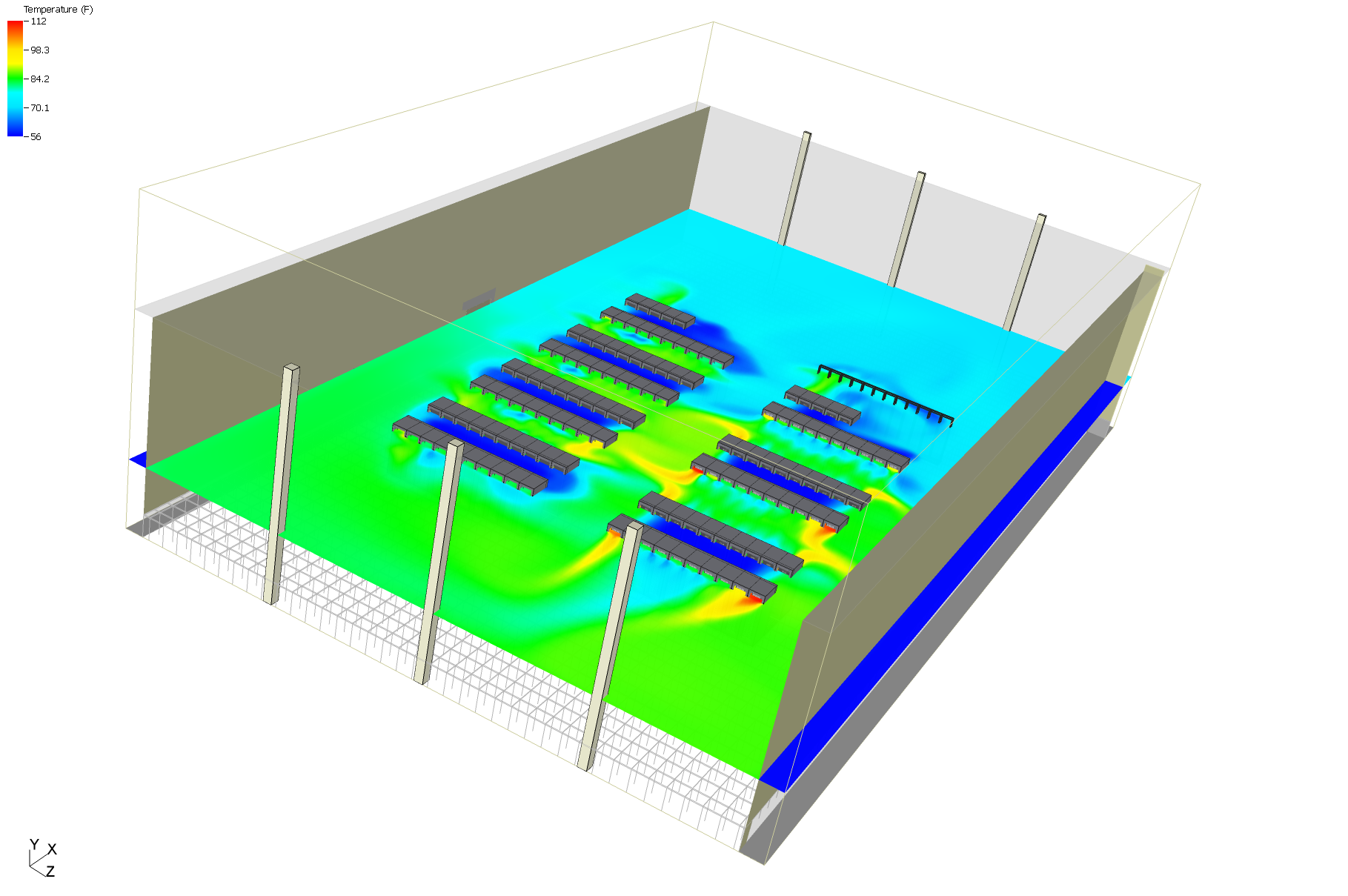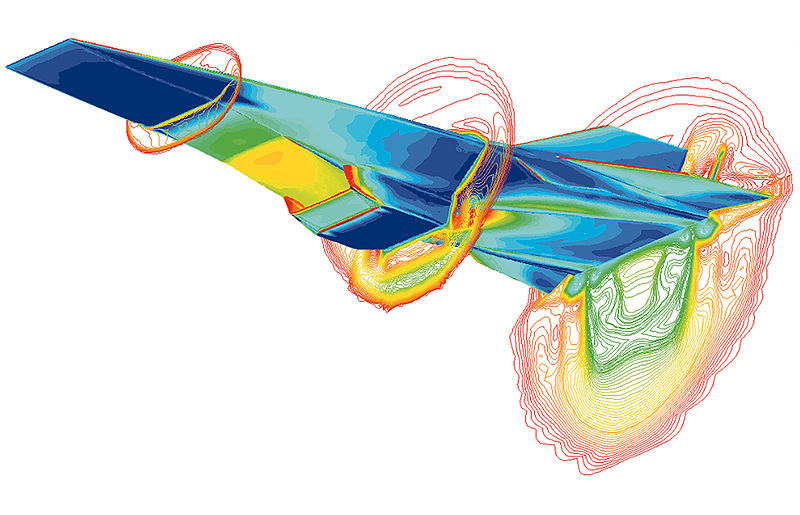In simple terms, Computational Fluid Dynamics (CFD) is a fluid mechanics discipline that uses mostly Navier-Stokes equations to analyze fluid flow problems. It looks something like this:
![]()
![]()
I remember attempting to solve these equations with a paper and pencil (and a TI-85) in college- no, thank you. Now that we can use computers to perform these daunting calculations, CFD’s are more pleasant. They are truly a great tool. If you are a gamer, then you see these equations get solved a lot as they are used in video games to model wind, fire and a wide variety of natural phenomena. In engineering, CFD’s are widely used in the design process of structures such as an airplane and its wings.
CFD’s allow you to analyze and visualize the results of a given problem/scenario – but the results depend heavily on the inputs/variables. How CFD’s work? – in general the simulation solver breaks whatever you are trying to model into tiny pieces (iterations) and solves the NS equations for each. After the model is solved, the CFD tool gives you quantitative and visual results data of velocities, temperatures, pressure and other variables specific to the application. There are a few CFD products that are specific to data centers; these include 6Sigma, Tileflow, Flovent, Coolsim, among others. I have used Tileflow and 6Sigma and consider both great tools. Currently I am using 6Sigma at Compass.
For me, its all about having a plan. CFD models in the data center industry are a must in the design phase and could be a should (nice to have) in operations.
A must in design
Consider this, say you are designing a data center in a city like Denver, where air density and altitude are major environmental factors. Try answering these critical questions if you do not use a CFD tool.
[list type=”check”]
- How would you spec out a mechanical unit size without over-engineering it and over-spending – specific to a data center application?
- How would you know (or at least have an educated idea) how your, or your customers, racks perform in a N scenario or in maintenance mode?
- What densities can your data center handle before the need of containment?
- How could you predict hot spots?
- How could you predict negative pressures?
- and so on…
[/list]
I rest my case.
A should (or nice to have) in operations
If you already have a data center in operation, then it would be great to leverage CFDs. The theory is, CFD models do not have to die after the design phase. In operations, where you are doing tons of move/adds/changes constantly, you will benefit tremendously from being able to manage your data center environment more efficiently. Where should I place this 20kw rack? Hmm, run a CFD and you will have a better idea. I know that Future Facilites, the makers of 6Sigma, sell a product specifically for operational management, 6SigmaFM. I haven’t used it, but the concept of using the same CFD that you used in the design phase to plan, test and/or predict your data center’s growth and integrates with your DCIM tool, is very attractive. Beats having to use a thermal imager every time you want to do a move/add/change.
What do you think?



